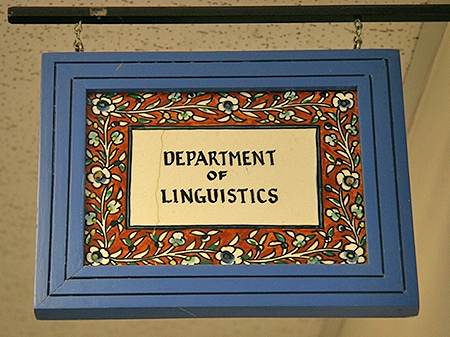
Linguistics ETDs
Publication Date
Summer 7-15-2017
Abstract
This dissertation presents an analysis of child acquisition and production of the Navajo verb construction. My data shows that Navajo children extract meaningful verb units that do not adhere to the linguistic boundaries normally ascribed to the Navajo verb. Through my data, I have observed that children use morphologically and phonologically reduced units. They produce verb constructions that exhibit fusion with units outside the verb such as postpositions. As the children acquire larger units, or chunks, morphophonological interactions are preserved.
This dissertation is a longitudinal cross-sectional analysis of child language data collected from four Navajo speaking children. The children, all male, range in age from 4 years 11 months through 11 years 2 months. My fieldwork included obtaining permission, recruiting participants, recording, transcription, coding, corpus building, and analysis. This study uses insights from usage-based linguistic theories and approaches to the study of child language acquisition in a polysynthetic and highly fusional language. Emphasis on semantically and phonologically cohesive units and frequency of use within functional linguistics are all central to understanding the process of acquisition of polysynthetic verbs among Navajo children.
There have been few studies of the acquisition of polysynthetic languages (e.g., Mithun 1989) and only one other study on the acquisition of Navajo verbs (Saville-Troike 1996). Her findings suggest that parts of the Navajo verb structure are learned as a unitary lexical item, a chunk, while other components of the verbal complex are learned as separate prefixes. In polysynthetic languages, the verb root is the first unit of the verb construction to be acquired.
In this paper, I hypothesize that this principle of learning verbs involves semantically relevant chunks and is central to the acquisition of the Navajo verb. This is consistent with work by Tomasello (2003), for example, who says that children learn constructional schemas one verb at a time. Children, he says, learn meaningful constructions in a process that is gradual, piecemeal, and context-sensitive. More frequent verbs are the ones that become tied to schemas earlier.
Furthermore, I suggest that within a semantically relevant chunk, children will learn the detailed sound changes which contribute to the meaning of the verb construction and the verb stem. This process allows a Navajo verb construction to convey information, since individual morphemes may not be meaningful in isolation or they may be ambiguous. The extraction of a semantic chunk is supported by recurring units of morphophonemics within a verb construction, thereby becoming frequent processing units. Bybee (2001) states that “words that are often used together become processing units because it is easier to retrieve a larger chunk of language than to piece an utterance together morpheme by morpheme…each time. It is within such chunks that phonological changes create variant forms of words, and thus alternations, moreover, it is precisely because these words occur embedded in larger fused units that the changes arise” (157). Semantically and phonologically relevant units are acquired as cohesive chunks.
Navajo speaking children do not make as many mistakes as expected. The units that they produce, although fused or reduced in form, are meaningful and comprehensible. These units produced by the children, however, are even more reduced or fused when compared to verb forms found in Young and Morgan (1987).
Language
English
Keywords
Navajo language, child language acquisition, Athabaskan linguistics, chunking, Navajo verb
Document Type
Dissertation
Degree Name
Linguistics
Level of Degree
Doctoral
Department Name
Department of Linguistics
First Committee Member (Chair)
Melissa Axelrod
Second Committee Member
Jill Morford
Third Committee Member
Barbara Shaffer
Fourth Committee Member
Joyce McDonough
Fifth Committee Member
Jay Williams
Recommended Citation
Chee, Melvatha R.. "A LONGITUDINAL CROSS-SECTIONAL STUDY ON THE ACQUISITION OF NAVAJO VERBS IN CHILDREN AGED 4 YEARS 7 MONTHS THROUGH 11 YEARS 2 MONTHS." (2017). https://digitalrepository.unm.edu/ling_etds/52
